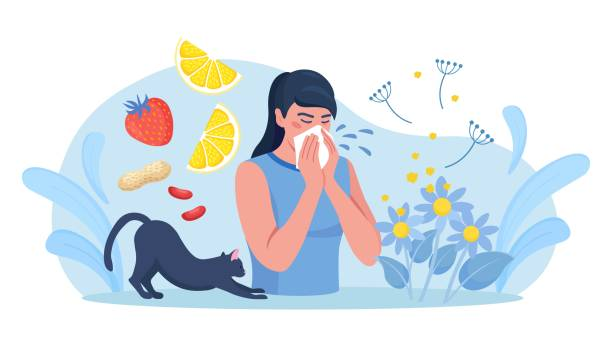
If you or someone in your household suffers from seasonal allergies, you’re probably familiar with the never-ending struggle to minimize exposure to allergens. You’ve tried air purifiers, regular vacuuming, and maybe even swapped your HVAC filters more often than recommended. But here’s a question you might not have considered: Can pressure washing actually help with allergies?
The answer? Yes—surprisingly, it can. 🙌
While it’s not a cure, pressure washing can play a huge role in reducing allergens around your home’s exterior, especially if you suffer from environmental triggers like pollen, mold, mildew, or dust. Let’s explore how this works, what areas you should focus on, and when it makes the most impact. 💧
🌼 Understanding Outdoor Allergens
Allergies aren’t just a springtime issue. Depending on where you live, allergens like pollen, mold spores, dust, algae, and even bacteria can linger throughout much of the year.
These irritants often accumulate on:
- Siding and exterior walls 🧱
- Roof shingles and gutters 🏠
- Decks, patios, and outdoor furniture 🪑
- Fencing and garden features 🚧
- Walkways and driveways 🚶♂️
When they build up, wind or rain can reintroduce these allergens into your breathing space—especially when windows are open or if you spend time outdoors.
🧼 How Pressure Washing Reduces Allergens
Pressure washing isn’t just about curb appeal. It’s an effective way to physically remove allergens from your property. Here’s how:
1. Pollen Removal
Pollen is notorious for clinging to every surface in sight during peak allergy season. Pressure washing can rinse away layers of built-up pollen from siding, decks, and vehicles—significantly reducing exposure.
2. Mold and Mildew Elimination
Mold and mildew often grow in shady, damp areas of your property—like under eaves or along north-facing walls. These fungi release spores that can cause respiratory issues and allergies. A pressure washer with a mold-killing detergent can blast away both the visible growth and the spores. 🌫️
3. Dust and Dirt Build-Up
Dust collects everywhere. When it builds up outside, it eventually gets tracked inside—especially if you have pets or kids. Pressure washing helps eliminate ground-level dust zones like patios, stairs, and walkways. 👣
4. Algae and Bacteria
These can trigger skin or respiratory irritations in sensitive individuals. Power washing discourages microbial growth by keeping surfaces clean and dry, especially in humid climates.
Browse Amazon Here For Popular Pressure Washers And Accessories
🧽 Where to Focus Your Efforts
Here are the key spots to target when pressure washing with allergy relief in mind:
- Home exterior (siding, windows, and eaves)
Removes pollen, mold, mildew, and airborne debris that collect on walls and trim. 🏡 - Decks and patios
Common sources of hidden mold and allergens beneath furniture or in grooves between boards. 🪵 - Driveways and walkways
Especially useful in high-traffic areas where pollen and dust collect. 🛣️ - Outdoor furniture and equipment
Use a lower PSI setting for softer surfaces—nobody wants to sit on a dusty, moldy chair. - Fencing and garden borders
Algae, mildew, and airborne debris frequently gather in these areas, too.
⏰ When to Pressure Wash for Allergy Relief
While you can pressure wash year-round (weather permitting), there are key times when it’s most helpful for allergy sufferers:
- Early spring: Just before or during pollen season to prevent buildup
- Mid-summer: When mold and mildew are peaking in humid regions
- Late fall: After leaf drop, to clear out rotting debris and spores
Washing right before these allergy-heavy times can limit allergen exposure from the get-go.
🛠️ Pro Tips for Allergy-Sensitive Households
- Use a mold- and mildew-killing detergent designed for pressure washers
- Wear a mask while cleaning to avoid inhaling airborne spores
- Use a low-pressure nozzle for softer surfaces like wood or outdoor cushions
- Rinse thoroughly to prevent detergent residue from irritating sensitive individuals
- Don’t forget to clean gutters—they’re a haven for moldy buildup!
🧠 Final Thoughts
While pressure washing won’t eliminate every allergen from your life, it can make a noticeable difference in your outdoor air quality and reduce exposure to triggers like mold, mildew, and pollen. 🤧🌿
To recap:
- ✅ Pressure washing removes allergens from outdoor surfaces
- 🧽 Focus on siding, patios, furniture, and walkways
- 📆 Wash before peak allergy seasons (spring and summer)
- 🧴 Use cleaners designed to kill mold and mildew spores
- 🌬️ Rinse and dry thoroughly for lasting relief
Think of pressure washing as an exterior deep clean—one that can bring relief to your sinuses while also making your home look fantastic. Double win! 💪💧🏡
Browse Amazon Here For Popular Pressure Washers And Accessories






